- Region
- Vega baja
- Marina Alta
- Marina Baixa
- Alicante
- Baix Vinalopo
- Alto & Mitja Vinalopo
-
ALL TOWNS
- ALICANTE TOWNS
- Albatera
- Alfaz Del Pi
- Alicante City
- Alcoy
- Almoradi
- Benitatxell
- Bigastro
- Benferri
- Benidorm
- Calosa de Segura
- Calpe
- Catral
- Costa Blanca
- Cox
- Daya Vieja
- Denia
- Elche
- Elda
- Granja de Rocamora
- Guardamar del Segura
- Jacarilla
- Los Montesinos
- Orihuela
- Pedreguer
- Pilar de Horadada
- Playa Flamenca
- Quesada
- Rafal
- Redovan
- Rojales
- San Isidro
- Torrevieja
- Comunidad Valenciana


- EDITIONS:
 Spanish News Today
Spanish News Today
 Murcia Today
Murcia Today
 Andalucia Today
Andalucia Today
article_detail
Spanish News Today Editors Roundup Weekly Bulletin Oct 11
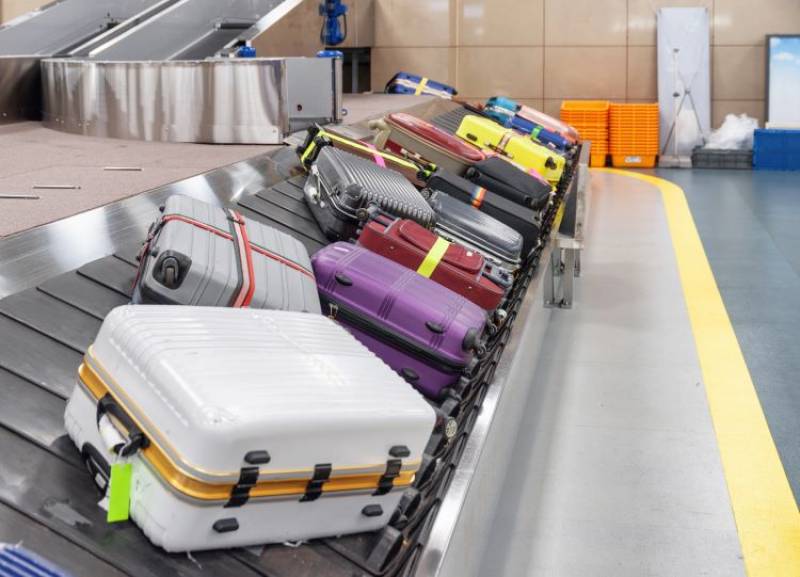
TOP STORIES: "Baggage handler strikes at Spain's airports threaten October hols" & "Euromillions jackpot winner goes missing in Spain"
It’s a bit of a weird Spain Day this year. It falls on a Saturday so it’s not a day off work, though many schools were off on the Friday. Some shops are shut, others are open.
This Saturday is also when the so-called ‘comet of the century’ is supposed to be brightest and most visible in the sky, so keep an eye out for that if it’s not too cloudy.
Which, actually, is what most people have been focusing on this week – the wild and windy weather which wove its woeful way eastwards from Wednesday.
Hurricane in Spain
Everyone’s thoughts are with the people of Florida this week, who are desperately battling against the devastating impact of Hurricane Milton. At the same time, Spain has been dealing with its own freak weather event.
Although Storm Kirk had lost its hurricane status by the time it reached Spain on Wednesday October 9, it unleashed a whirlwind of chaos across the country, leaving a trail of destruction in its wake. Thousands of incidents were reported, particularly in the north, and at least nine people were injured.
The storm wreaked havoc on transportation, with planes diverted, trains derailed and countless roads blocked by fallen trees and flooded rivers. Jaw-dropping footage from across the nation captured the sheer brutality of Storm Kirk, which, despite its brief existence, delivered an unforgettable punch.
The most dramatic impact came from winds that soared to an astonishing 205 kilometres per hour in Mirador del Cable, Cantabria. Coastal and mountainous regions reported wind speeds above 140kmh, including 181kmh in Lardeira (Ourense), 165kmh in Valdezcaray (La Rioja), and 145kmh in La Covatilla (Salamanca).
Pontevedra 7:00 AM. Ciclón Extratropical EX-Kirk 💨💨💨#kirk pic.twitter.com/JZWoemWQgx
— Beniheart (@BeniG77) October 9, 2024
In Castilla y León, eight people sustained injuries primarily due to falling trees and collapsing structures, while a ninth injury occurred in Galicia when a massive branch struck a 25-year-old woman.
Gale-force winds at Bilbao Airport led to the cancellation of 50 flights, impacting around 8,000 travellers and in Pontevedra, locals braved the aftermath on Thursday morning, only to be stunned by the discovery of a 15-metre whale washed up on Pampaído beach.
Among the most shocking footage was captured in Berria, Cantabria, where a resident filmed the dramatic collapse of scaffolding from a high-rise building.
🌪️ Susto de Kirk a su paso por Berria 🏢
— Postureo Cántabro 💢 Presume de Cantabria (@Postureo_CANT) October 9, 2024
📍 Santoña (Cantabria) pic.twitter.com/7uJteuHCxE
Though calm has returned to Spain just 24 hours later, meteorologists are already forecasting the next storm: an Atlantic front expected to hit this Friday. If it makes landfall, it will be named Storm Berenice.
While its exact path remains uncertain, experts anticipate it could settle off the coast of Portugal, potentially steering a secondary low through southwestern Spain.
For quite some time now, we’ve been hearing how climate change is causing all kinds of weather events to become more and more extreme – storms are getting more violent, and the summers are a lot hotter than they were a few years back.
It should really come as no surprise then that September 2024 has just been named the hottest since 1991 globally, and the second-warmest in Europe. That’s according to the Copernicus Climate Change Service (C3S), which revealed last month, the average temperature reached a sizzling 16.17°C, a significant 0.73°C above the average for this time of year.
But that’s just the tip of the melting iceberg. So far, 2024 has been the hottest year of all time, and it will indeed take the record unless the anomaly drops by more than 0.4°C in the next three months, something that’s extremely unlikely.
In fact, scientists are already calling it; the Climate Change Service highlighted in its report that this year will “almost certainly” be the warmest on record.
The report also highlights the extreme weather events that occurred in September 2024, including Storm Boris, which caused heavy rain, flooding and damage in central and eastern Europe. In contrast, the month was drier than average in Ireland, the north of the United Kingdom and a large part of far eastern Europe and the west and south of the Iberian Peninsula, where severe forest fires were observed.
Jackpot crackpot

The small town of Derio in northern Spain is buzzing with excitement and a bit of mystery as a huge 162 million EuroMillions jackpot sits unclaimed. The winning ticket, sold last week in Vizcaya, has everyone wondering who the lucky winner could be.
With the winning numbers 4, 8, 16, 17, and 20, plus the stars 6 and 1, someone is now a multimillionaire, but their identity is still a mystery.
The State Lottery office in Derio, where the ticket was validated, has become a hotspot for well-wishers and curious locals hoping to catch a glimpse of the elusive winner.
As the search for this mysterious millionaire continues, the excitement in Derio is palpable. Could the winner be someone from the town, or maybe a tourist who happened to stop by? Everyone is on the edge of their seats, eagerly waiting for the big reveal.
While this isn’t the biggest EuroMillions prize ever awarded in Spain, it’s definitely a life-changer. The winner will walk away with an incredible 162,256,512 euros – enough to bring a huge smile to anyone’s face!
Can you handle it?

In the bustling world of Spanish air travel, it seems there’s never a dull moment, especially when it comes to labour disputes. Just as travellers gear up for their October half term getaways, a new wave of strikes led by baggage handlers threatens to throw a wrench into travel plans across the country.
Right before last weekend, three of Spain’s largest unions – UGT, CCOO, and USO – unveiled their intentions to strike on behalf of workers from the Association of Auxiliary Services Companies for Air Transport (ASEATA). This group encompasses a number of companies responsible for baggage handling at airports nationwide.
The unions are complaining that a few of the companies still haven’t complied with the new collective agreement designed to provide staff with better pay and working conditions and they claim that the industrial action is a “last resort”.
However, the dates and duration of the strike haven’t been finalised, indicating that there might still be an opportunity to avoid the widespread disruption.
The unions have specifically called out baggage handling companies such as South, Aviapartner, Menzies, Azul Handling, Swissport, and Groundforce for “repeated and systematic breaches” of the collective agreement. Their grievances include failure to implement salary adjustments, disregard for the agreed salary levels, and improper scheduling practices, with last-minute roster changes causing havoc for workers.
To avoid the strike action, the unions have demanded that ASEATA and the offending member companies reconsider their position urgently and commit to an “effective and decisive” dialogue about staff working conditions.
Murcia

The old San Javier Airport. Since its closure in 2019, it’s been the subject of endless plans to breathe new life into it – most of which have gone exactly nowhere.
They thought about turning it into a home for the Spanish space agency (but sadly lost out to Elche up in Alicante), then someone had the bright idea to make it a sanctuary for endangered species from the Mar Menor, but that was a non-starter.
Now, the latest proposal is to transform it into a satellite technology centre for SMEs in the security and defence sector, which sounds just vague enough and bland enough to actually work. It sounds fancy though, with classrooms, offices and even leisure areas in the plans.
And it would make sense to have the airspace techies working alongside the military forces who operate out of San Javier. But whether this idea will take off or just end up being another idea grounded before it gets going is anyone’s guess.
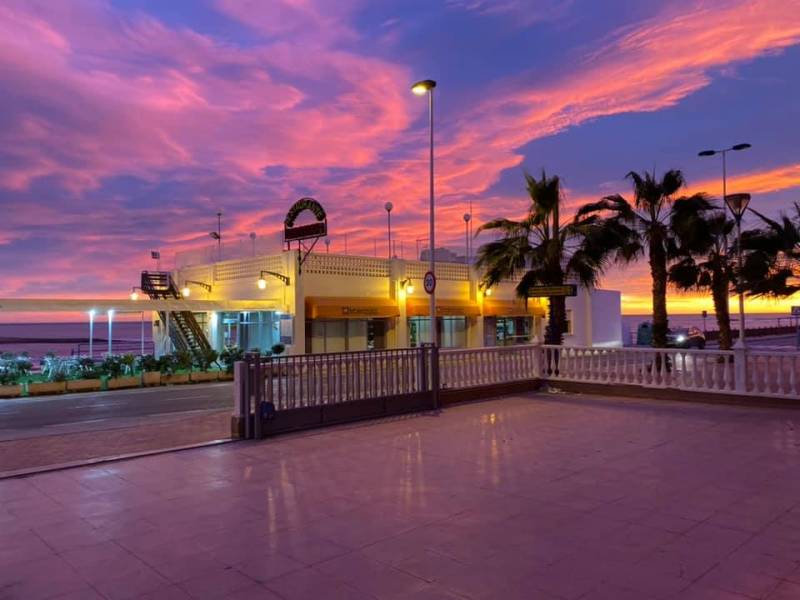 While San Javier may be struggling to find its next chapter, another local legend is bidding farewell in a much sadder way. The Miramar restaurant at La Isla in Puerto de Mazarrón, a beloved institution since the 1960s, is being demolished.
While San Javier may be struggling to find its next chapter, another local legend is bidding farewell in a much sadder way. The Miramar restaurant at La Isla in Puerto de Mazarrón, a beloved institution since the 1960s, is being demolished.Despite its storied history, having hosted famous faces like Julio Iglesias and other Spanish celebs, this beachfront icon couldn’t survive a battle with Spain’s Costas coastal demarcation authority, which finally got around to deciding that the restaurant’s prime location was built without proper planning permissions.
The owners claim they didn’t even get an official notification about the demolition and that they were blindsided when the wrecking crews showed up, while Costas claim they’ve been warning them repeatedly since 2017. Fired up by the controversy and coming out to show their respect (or maybe just rubberneck a bit), locals gathered to mourn the loss, but ultimately, Miramar couldn’t escape the long arm of bureaucracy.
For some it will be chalked up as just another casualty of Spain’s tendency to build first, check the paperwork later; for others a victim of a seemingly arbitrary but all-powerful decision-making process that decides to tear down so-called illegal buildings 60 years later. It has locals living in the area scared that their homes could be pulled down next!
 Speaking of not following the rules, let’s hop over to Murcia’s airport now, where a passenger bound for Manchester tried to smuggle over 25 kilograms of tobacco. Guidelines say you’re allowed to take 250 grams of tobacco or 250 cigarettes with you from Spain to the UK, just enough for personal use.
Speaking of not following the rules, let’s hop over to Murcia’s airport now, where a passenger bound for Manchester tried to smuggle over 25 kilograms of tobacco. Guidelines say you’re allowed to take 250 grams of tobacco or 250 cigarettes with you from Spain to the UK, just enough for personal use.The guy had enough tobacco in his hand luggage to fill a small warehouse, and none of it had a Spanish tax seal. Presumably he was going to try and sell it at just below market value in the UK, which is still about four times as much as it costs in Spain. The Guardia Civil quickly swooped in, confiscated the contraband and they’ll slap the passenger with a hefty fine, which can reach up to 20,400 euros.
But while we’re on the subject of things slipping under the radar, Murcia’s wetlands are starting to look like a ticking time bomb for West Nile virus. Andalucía, of course, has been battling its worst outbreak of the virus since 2010, with nine deaths so far this year. And while Murcia hasn’t seen any human cases yet, experts say it’s only a matter of time.
Experts are warning that the Region has all the right (or should we say wrong) conditions for an outbreak – mosquitoes, migratory birds and increasingly warm temperatures, courtesy of climate change. Local health officials are playing it cool for now, but they’re keeping a close eye on the wetland areas of Murcia, where mosquitoes have been trapped and are currently awaiting tests.
And it’s not just West Nile that’s causing concern. Oropouche virus, another mosquito-borne illness, has popped up in Murcia, adding to a growing list of tropical diseases making themselves at home in Spain, thanks to rising temperatures and international travel.
If that doesn’t put you off getting out and about, though, then you’d be well advised to get down to the beach at Los Alcázares this Saturday for their famous Caldero Day, when the brew up tasty broths right on the sand there for people to enjoy. A very enjoyable local fiesta, with the ever-present beer, music and dancing, of course.
Remember to see our EVENTS DIARY for more events and activities coming up soon in the Region of Murcia:
Spain
From January 1 next year, Spain’s self-employed workers, or autónomos, will face a major shift in their social security contribution system. The government is introducing a new model that calculates contributions based on actual income instead of allowing workers to choose their base.
Currently, self-employed individuals can select their contribution base within certain limits, which means they often pay a little less monthly to the detriment of their pension benefits down the line.
The Tax Agency is now verifying whether autónomos have paid correctly based on their income, and those who haven’t may receive tax bills starting in November.
Going forward, the new system will categorise self-employed workers into 15 income brackets, from 670 to 6,000 euros monthly, with contributions ranging from 200 to 590 euros. Workers can update their contribution base up to six times a year based on their income changes.
Lower-income workers may see monthly contributions drop by up to 30 euros, while those earning over 1,700 euros will likely pay an additional 30 to 90 euros monthly – translating to annual increases of 360 to 1,080 euros.
Madrid Airport turned into a scene straight out of a Hollywood thriller this week. In just under a week, 10 asylum seekers have pulled off daring escapes, including six Moroccan citizens who slipped through a hole in the wall of the airport’s reception area on October 7.
This was the second breakout in just four days, following another group of four irregular immigrants who made a similar escape the previous Wednesday.
The police union Jupol has raised alarms about the “improvised and insufficient” conditions at the airport, blaming both the airport operator, Aena, and the Ministry of the Interior for failing to prevent these incidents.
“If two immigrants come out, they can be caught, but if six come out, they can’t,” said the union representative.
“This time, they were able to arrest three, but the other three ran away. If 100 come out, it’s impossible to control them all.”
Incredibly, the only safeguards against these escapes are two chairs placed at the exit of the hole, which officers are expected to guard around the clock. Inside, a sweeping brush has been placed across a couple of seats to separate officers from the asylum seekers.
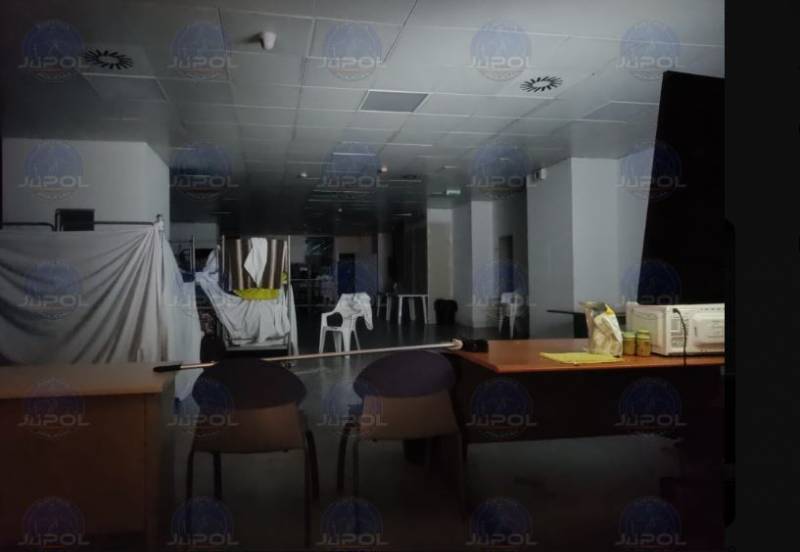
“We cannot work in these conditions, without security measures and without adequate conditions,” the police unions stressed last week, pointing out the “seriousness” of not knowing where the fugitives are going after fleeing.
“They can cause a critical security incident by running wild in a critical structure. They can go out onto the tracks or to various places where they could endanger security.”
A shocking and disturbing video has surfaced from the streets of Barcelona, capturing a stranger’s unprovoked and vicious attack on a 1-year-old girl, leaving her parents horrified and traumatised.
‼️ Indignación en Barcelona: un hombre abofetea a un bebé en el parque de Montjuïc
— EL ESPAÑOL (@elespanolcom) October 7, 2024
⛓️ El agresor, de 31 años, fue detenido este domingo tras la salvaje agresión
👉 Ya tenía tres denuncias previas por el mismo delito pic.twitter.com/Ps5PayPz9g
The footage shows a 31-year-old man initially pretending to strike the child, only to follow through with a real blow, hitting her on the left side of her face.
The incident begins with the man screaming in the faces of tourists, before setting his sights on the unsuspecting toddler, who was walking in front of her pushchair. The parents, clearly concerned for their child’s safety, attempted to shield her from the stranger. However, the man’s aggression escalated, and he struck the child.
What’s even more alarming is that this was not an isolated incident; the attacker had already assaulted two other people over the weekend, including a 60-year-old man who suffered multiple cuts and bruises.
Thanks to eyewitness descriptions and the video footage, the police were able to identify the perpetrator and arrest him.
The EU’s latest brainwave to emerge this week and which has surprised no one is to digitise passports and ID cards for travellers in the Schengen Area, as if we weren’t already handing over enough of our personal data.
It will work thanks to the European Commission’s ‘EU Digital Travel’ app, which promises to speed up border checks by letting you store a digital version of your passport on your phone – because who doesn’t love having even more of their private details floating around in the cloud?
They say it’ll improve security and cut down on document fraud, and is actually not a whole lot more intrusive than all the ID, passport and visa details that are already all stored digitally, but some travellers are understandably sceptical about handing over more of the decision-making about their freedom to travel into the hands of algorithms, and big tech data harvesters.
Of course, this all comes after the endlessly delayed Entry/Exit System (EES) – you know, the one that’s meant to streamline EU border control but has been pushed back so many times we’ve lost count.
The new app will be voluntary (for now), but they’re clearly edging towards a future where everything is digital, and we have little choice but to comply. Oh, and there’s the added kicker: they’re rolling out the ETIAS visa waiver, meaning non-EU travellers will now have to pay for the privilege of being tracked.
Alicante
The Costa Blanca is certainly no stranger to earthquakes, but even for the southern tip of Alicante three in the space of a couple of hours is somewhat unusual. Thankfully, these quakes were classed as “minor” and didn’t actually cause any damage or injuries.
The first earthquake, measuring 2.0 on the Richter scale, hit the municipality of Los Montesinos at 10.45pm on Monday night, October 7. Its epicentre was located in the Vega Baja area, a region with a long history of earthquakes.
Just over an hour later, at 12.09am on Tuesday October 8, a second quake struck, this time with a magnitude of 2.4, northeast of San Miguel de Salinas.
A third earthquake followed at 1.01am, measuring 2.3 on the Richter scale, with its epicentre located in the east of San Miguel de Salinas.
In recent years, the Vega Baja region of Alicante has been hit by a string of notable quakes, including significant tremors in Rojales (2013), Los Montesinos (2015) and southeast of San Miguel de Salinas (2018).
The Spanish National Geographic Institute (IGN) has been closely monitoring the area, and residents are being warned to be prepared for more tremors in the coming months.
To celebrate the launch of its new route, high-speed rail company Ouigo has announced a spectacular sale that will get you travelling in style without breaking the bank.
From October 9, the French operator has been offering unbeatable fares on its services connecting Valladolid, Segovia, Madrid, Cuenca, Albacete and Alicante.
For a limited time, snag a one-way ticket for as little as 9 euros for adults and 7 euros for kids aged 4-13. And, as a special treat, children under 3 years old travel for free when they sit on an adult's lap.
This incredible offer is valid for travel seven days a week from December 15 to June 29, 2025.
But that's not all. On October 18, Ouigo will unveil tickets for its direct train services between Valladolid and Valencia (just 3 hours) and Segovia and Valencia (2.5 hours). These tickets will also be available for travel from December 15 until the end of June next year.
And, as an added bonus, you can now travel from Madrid to Murcia with a stop in Elche. Be sure to check the Ouigo website from October 9 for fantastic deals on this route, also valid from December to June.
 Last week, the Spanish government dropped a bombshell: waste collection charges are set to skyrocket by a whopping 150% nationwide from 2025. But for residents of the Orihuela Costa, the news was even more dire, with initial proposals suggesting a staggering 300% hike in bin charges.
Last week, the Spanish government dropped a bombshell: waste collection charges are set to skyrocket by a whopping 150% nationwide from 2025. But for residents of the Orihuela Costa, the news was even more dire, with initial proposals suggesting a staggering 300% hike in bin charges.The outcry was immediate, with many expressing outrage over the already woeful state of communal bins in the area. But in a rare display of responsiveness, the local government listened to the concerns and has announced a revised, albeit still significant, increase.
So, what’s the new price tag? From January 1, every household in Orihuela will pay a flat rate of 0.55 cents per day for waste collection, translating to around 200 euros per year. While still a substantial jump from the current 70 euros, it's a welcome reduction from the initial proposal, which would have seen coastal residents shelling out a whopping 238.76 euros.
But why the hike? The answer lies in the 2022 European Waste Law, which requires local authorities to pass on the full cost of waste collection to households by April 2025. Currently, homeowners only cover 34.86% of the bill, with councils picking up the rest.
To meet this new requirement, Orihuela City Council will be investing over 3 million euros per year for the next six years to improve waste management services.
Some households will be eligible for discounts based on economic criteria, including single-parent families, large families and victims of gender violence. The council is also working on tax breaks and bonuses for recycling, although details are still scarce at the moment.
A recent study has revealed that nearby Torrevieja is officially the most affordable coastal city in Spain, with housing prices averaging 1,979 euros per square metre. Some of the cheapest areas include the centre (€1,558/m2) and Playa del Cura (€1,842/m2), while the priciest spots, like Los Balcones (€2,432/m2), still offer relative bargains compared to other coastal regions.
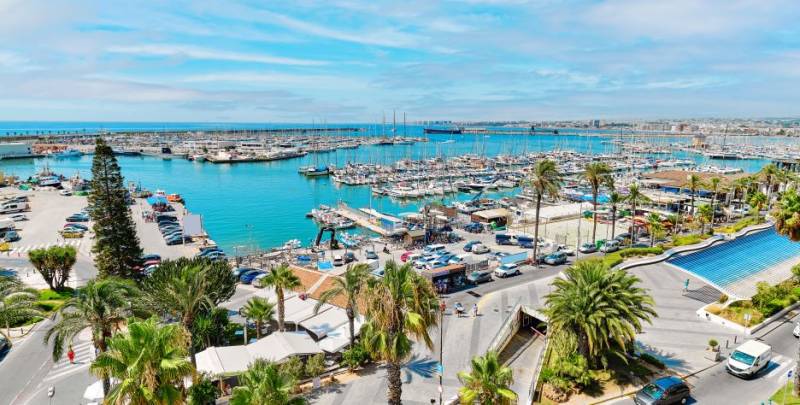
Torrevieja is not only cheap but also super multicultural, with 122 different nationalities calling it home, led by Ukrainian, Russian and British residents. With its 14km of coastline, mild climate and a natural park taking up over half the municipality, it’s easy to see why Torrevieja is such a popular spot for sun-seekers.
Lastly, if you’re looking for something to do in Alicante this weekend, you could do worse than the Moors and Christians Fiesta in El Campello, a spectacular celebration of music, dance and culture.
Check out the Costa Blanca What’s On and Where to Go Facebook group to see more things to do around Alicante province!
Andalucía
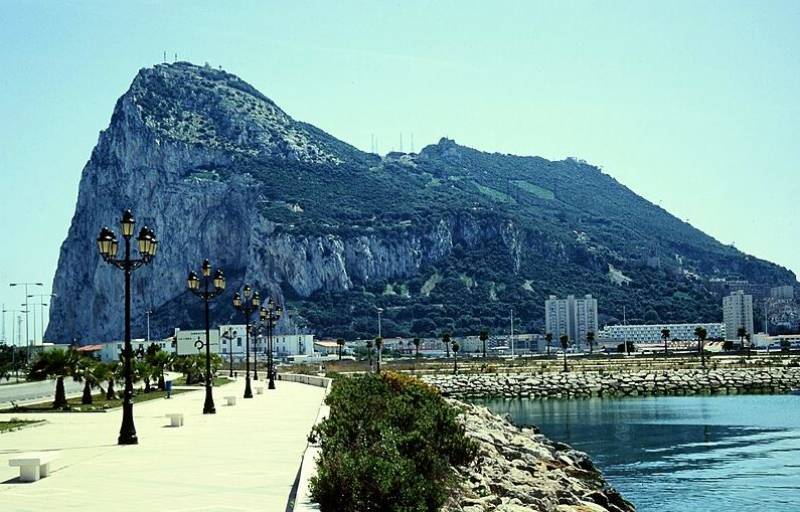 To Gibraltar now, where the UK’s decision to hand over control of the Chagos Islands in the Indian Ocean has sparked a bit of concern of a ripple effect. Since the UK announcement, Gibraltarians have been left wondering what this means for their own future.
To Gibraltar now, where the UK’s decision to hand over control of the Chagos Islands in the Indian Ocean has sparked a bit of concern of a ripple effect. Since the UK announcement, Gibraltarians have been left wondering what this means for their own future.British Foreign Secretary, David Lammy, announced the decision with much fanfare, labelling it a “victory for diplomacy,” but that didn’t sit well with Gibraltar, which has a long history of being coveted by Spain, to put it politely, and locals are probably now eyeing the Spanish border a little more nervously.
Thankfully, Gibraltar’s Chief Minister, Fabian Picardo, swooped in to reassure everyone that the Chagos Islands situation is completely different and that Gibraltar’s status isn’t up for grabs. Meanwhile, Lammy himself doubled down, stating that places like Gibraltar and the Falkland Islands are most certainly not part of some diplomatic jumble sale.
Still, with Argentina getting all riled up again about the Falklands, you can’t blame Gibraltar for feeling a tad uneasy. After all, when your home has been disputed for centuries, even the most distant developments can make you wonder if a neighbour’s knocking at the door.
While we’re on the subject of international connections, let’s hop from the windswept Rock to the sunny Costa del Sol, where people have been buzzing about the success of United Airlines’ Málaga-New York route.
It seems this transatlantic love affair is only getting stronger. The airline increased its flights to daily this summer, and people seem to be loving it. Demand was so high that they were filling almost all of their economy and business class seats.
Málaga Airport was practically bursting at the seams with US tourists. United Airlines was so pleased that it’s now considering extending the route to be year-round, which could see even more Americans jetting in for a bit of Spanish sun.
Not to be outdone, the Canary Islands are also getting in on the action, with United Airlines planning to extend its Tenerife-New York route to cover winter, too. Clearly, the US has a taste for Spanish winter sun, and the airlines are more than happy to cater to it.
Of course, with so many Americans (and Brits and everyone else) trying to buy a slice of the Costa del Sol lifestyle, it’s no wonder house prices in Málaga are going through the roof. The supply of second-hand homes has plummeted, which means prices are going through the roof.
Málaga city, in particular, has seen a 16.91% jump in house prices, making it the fastest-growing market in the whole of Spain. If you’re hunting for a home there, you’d better be ready to part with over 3,000 euros per square metre.
And it’s not just Málaga. Other cities like Madrid, Valencia and Sevilla are feeling the squeeze too, with the housing stock dwindling and prices on the rise. For those looking to snap up a place in a sunny Spanish city, the options are shrinking fast, though there is enough new construction in other, less built-up areas, to provide for the unstoppable demand for a place in the sun.

You may have missed…
- Community of owners: Ways you can get out of paying your community fees in Spain.
As a homeowner in Spain, you’ve got to pay your ‘comunidad’ for the upkeep of your building or community... or do you? Believe it or not, there are actually several situations in which a person may be released from their obligation to pay community fees... - Spanish truckers and bus drivers announce strikes over Christmas.
Professional drivers in Spain are demanding earlier retirement and better working conditions, for which they have called a general strike in the road transport sector for October 28, November 11, 28 and 29 and December 5 and 9. - Spain starts doling out big fines to pirate TV viewers.
Football fans in Spain are facing a hefty price tag for watching LaLiga games on pirate platforms. The Spanish government has started doling out fines of more than 450 euros to those caught watching matches on illegal platforms, and it seems to be having an impact. - English inventor creates ingenious and foolproof new way to treat jellyfish stings.
Inspired by a harrowing experience he had while swimming in Spain, English inventor Mark Dyer has created Stingblade – manufactured wholly in the UK from recycled fishing nets – an infallible new way to treat jellyfish stings that you can carry on your wrist. - Britain and Spain join forces and explore a 4-day work week.
As Spain gears up to implement a reduced 37.5-hour work week, many are wondering if a 4-day work week could be next on the horizon.
And that’s all for this week. Thanks for reading and we’ll have another for you next week.
Bye!
Contact Murcia Today: Editorial 000 000 000 /
Office 000 000 000



















